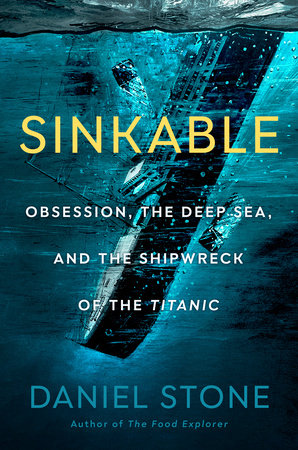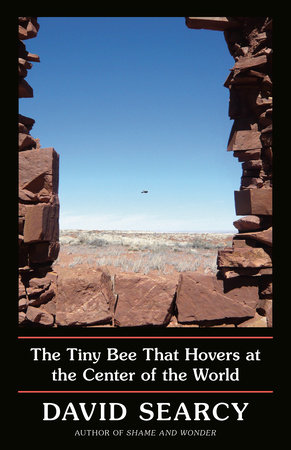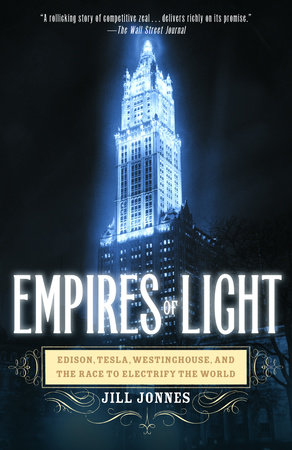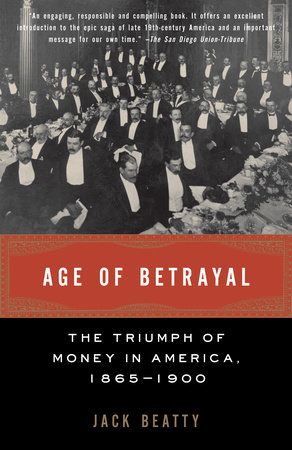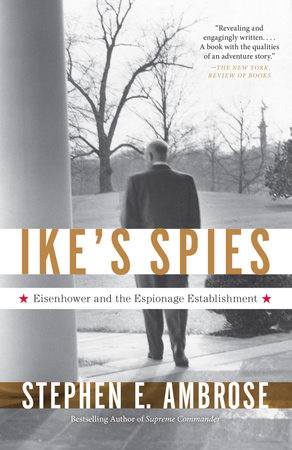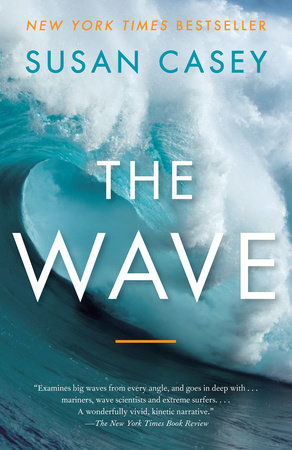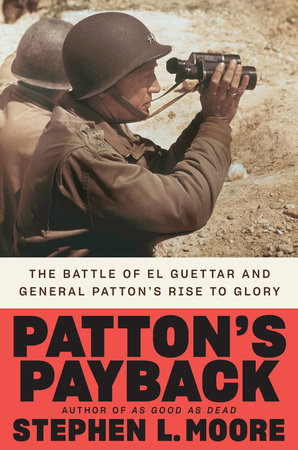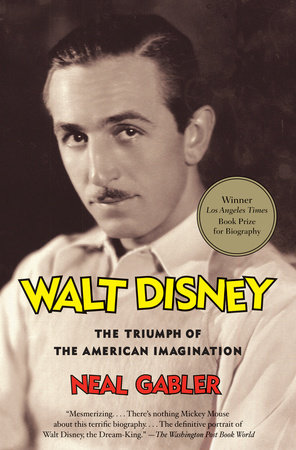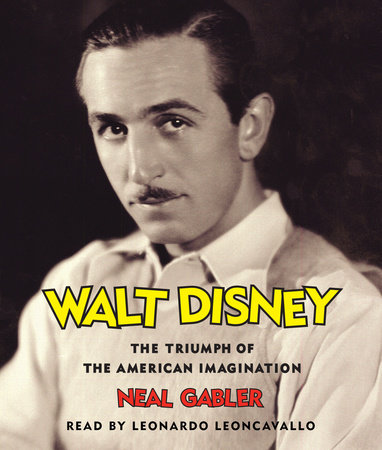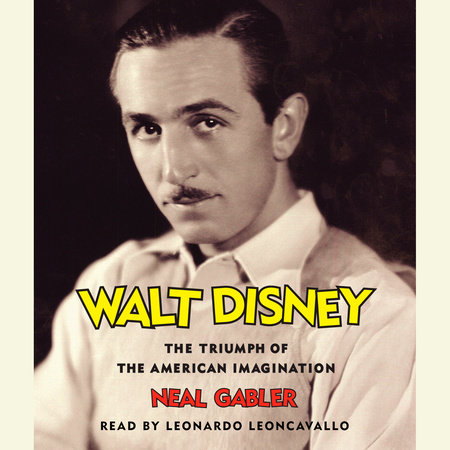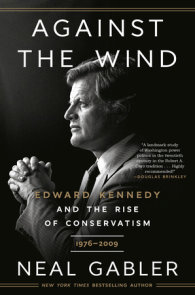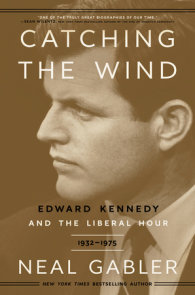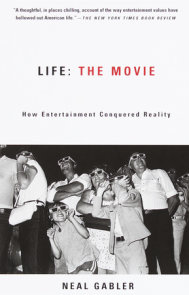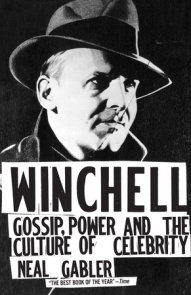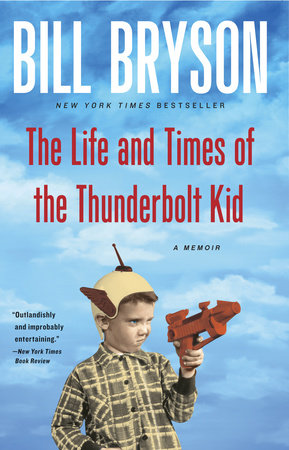Author Q&A
Q: Why Walt Disney?A: When you write about someone as grandiose as Walt Disney, you may tend to get a little grandiose yourself, so forgive me. But I had always set the task for myself to examine the forces that helped define American culture in the twentieth century and those individuals who might be regarded as the architects of the American consciousness. Walt Disney was certainly one of those forces and one of those architects. His visual sensibility is arguably one of the two most important in the last century, along with Picasso’s, yet Picasso has received dozens of biographies and Walt Disney had, when I began, not received a single full-scale, fully-annotated biography. I wanted to fill that gap in our cultural studies. I thought that if one could understand Walt Disney, one could go a long way to understanding American popular culture.Q: How were you able to secure full access to the Disney Archives?A: I knew what I was getting myself into. As I say in my book, the Disney Company is regarded by many scholars as as impregnable as the old Soviet Kremlin. The company also has a deep, vested interest in preserving and protecting the image of Walt Disney. At the same time, I have described myself as the Robert De Niro of biographers: I wasn’t going to let anything deter me and there wasn’t anything I wasn’t willing to do for my book. I applied for access to the Archives. It took months for me to hear back, only to learn that I had written to the wrong branch of the company. I resubmitted and waited another eternity—well over a year—before I heard that I was going to be granted access. I don’t know exactly why except that I was told the company felt sufficient time had passed since Walt’s death and that there was a need for a serious biography, possibly because the breach had been and would continue to be filled by non-serious ones. I also learned indirectly that Roy E. Disney, Walt’s nephew, had facilitated the project. And nothing would have advanced without the intercession of Howard Green, the senior vice president for publicity at Disney, and a Disney scholar in his own right. Howard opened the Archives to me and introduced me to Disney colleagues and friends. His only request was that I write a “serious” book. I have certainly tried to do so. I should also add that the Disney Company made no demand to approve the manuscript, and they did not. All the conclusions and interpretations are my own—uncensored.Q: How did you even begin to tackle the research involved in this project and how long did it take you?A: Only a fellow biographer can appreciate the perseverance it takes to write a book of this scale. I always advise putative biographers that writing something like is is akin to emptying the ocean with a teaspoon. If you look at the ocean, you’ll be too daunted to continue. So you have to stare at the spoon. Years pass—in this case seven years—and you look up to find the ocean is now behind you. Disney, both fortunately and unfortunately, was something of a pack rat. He left hundreds of thousands of pieces of detritus, and I determined to read all of them, which is why it took so long. I also read everything extant on Disney, conducted interviews, and pored through documents from other sources—everything from his grandfather’s last will and testament to his baptism certificate to his FBI records. This is, needless to say, not work for the fainthearted. I spent thousands of hours at the Disney Archives in Burbank—from 8:00 AM to 5:30 PM, usually without a lunch break—and I do everything myself, without researchers. I even transcribe the interviews myself. So you could say that the book is handcrafted.Q: What did you discover that most surprised you about Walt Disney?A: There is not a single revelation here as there was in my biography of Walter Winchell, where I discovered that Winchell had never married his second “wife.” What I did discover about Walt Disney personally was that he was fanatical—far more obsessive than I could have possibly imagined. Everything flowed from Walt. He was not one to delegate. He even counted the light bulbs at the studio. He was so absorbed by the studio that he had very little social life or even personal life. As one of his animators put it, Walt’s “orgasms” were all at the studio. I was also surprised by how much Walt struggled financially. Until Cinderella, the animations, with the exceptions of Snow White and Dumbo, were financial disasters. He lost millions. It wasn’t until Disneyland that the studio finally pulled itself out of the economic slough. That is certainly not how most of us perceive Walt Disney. In fact, he was a terrible businessman, and he had no regard for money.Q: You talk a lot about escape as a guiding force in Walt Disney’s life and art. What did Walt feel he was escaping from?A: Whether it was true or not, Walt Disney always felt that he had lived a childhood of great deprivation, both financially and emotionally. His father, Elias Disney, was a hard man—almost anhedonic in his approach to life. Eventually he managed to chase off all his sons, including Walt. Elias forced young Walt to deliver newspapers—Elias owned the route—and Walt would suffer nightmares forty years later over wading into snowdrifts as tall as he or falling asleep in the foyer of an apartment building or losing subscription money. As he told it, the route didn’t even leave time for play—though it did leave time for drawing, which is how Walt sought his release. One might make the claim that Walt spent his entire life compensating for his lost childhood by creating a perfect world.Q: Walt’s early years on the family farm in Marceline, Missouri had a huge influence not only on the animals that would come to populate his films but on his eventual vision for Disneyland. What were the biggest influences in his early life that were/are reflected in his vision for the parks?A: When I talk about Walt compensating for his childhood, he did have a model: the Marceline farm where he spent his years from 1906 through 1911. Marceline was a small, rural community that its own townspeople idealized, though Walt seemed to take the idealization even further. He loved the bucolic environment there, the lazy days fishing, the sense of community and neighborliness, the tolerance, the excitement (Walt saw his first film there and rode in a wagon with Buffalo Bill Cody). These left a lasting impression, and if one would say, as I did, that Walt spent his life compensating for his childhood, one might also say that he spent it trying to recover the security and serenity he had known in Marceline. Main Street, U.S.A, in Disneyland owes a debt to Marceline’s Main Street. Its Tom Sawyer Island owes a debt to Walt’s childhood adventures in Marceline. His fascination with trains owes a debt to the trains that ran near the family farm there. The sense of camaraderie at the studio is certainly a product of the camaraderie Walt felt in Marceline. And of course the emphasis on animals was something Walt himself attributed to Marceline.Q: The relationship between Walt and his brother Roy is fascinating. Do you think Roy Disney gets enough credit for his role in keeping the studio going?A: Motion picture studios are inherently divided between the creative side,usually located in Hollywood, and the financial side, usually located in New York. At Disney things were a bit different. Walt was the absolute authority on the creative side; for a long time he did not brook any aesthetic compromises. But he could only do so because his older brother Roy was in charge of the financial arm, not in New York, but in a wing of the studio directly across from Walt’s own office. Roy tried manfully to rein his brother in ad convince him that there were financial limits. Walt refused to acknowledge them. At any other studio he would have been toppled for his extravagance. Of course he owned the studio—at least until he was forced to take it public in 1940—so he couldn’t be fired, but he also had the advantage of having Roy guarding the treasury. As much as Roy hectored Walt, he couldn’t bring himself to trim Walt’s sails. If Walt wanted to do something—convert cartoons to color, make a feature animation, build a new studio, build a theme park—Roy saw his job as getting Walt the resources. I seriously doubt that any other studio—any other business—could have been run this way. Roy was an enormous adjunct to Walt. It is difficult to determine why. I could only conclude that Walt provided a certain excitement, a thrill that Roy could experience vicariously. Walt had that effect on a lot of people.Q: Can you clear up Walt’s involvement with Red-baiting an the anti-communist fervor that swept the country?A: You might also want to add the accusations that Walt was anti-Semitic. Walt was largely apolitical. He voted for FDR in 1936 then for Willkie in 1940. But in 1941, he suffered one of the great traumas of his life, which I discuss in some detail in the book: his employees struck the studio as a way of getting Walt to accept their unionization. Walt had always perceived of the studio as a workers’ paradise and himself as a benevolent leader. The strike shattered all that. Walt was determined not to let his employees have their union, and the strike dragged on for months, until the studio was finally pressured by its main lender, the Bank of America, to reach a settlement. Walt stewed throughout and afterward, and he could only conclude that the strike had been initiated by communists. In this, as I say in the book based on documents I found, he may not have been entirely wrong. From that time forth, Walt was a dyed-in-the-wool anti-communist. He joined the Motion Picture Alliance for the Preservation of American Ideals, an adamantly anti-communist group, and he testified as a friendly witness before the House Committee on Un-American Activities in 1947. (During his testimony he carelessly labeled the League of Women Voters as a communist organization—a charge he was later forced to recant.) As for the anti-Semitism, Walt was certainly no overt anti-Semite. There were Jews at the studio in prominent positions, and there is little credible evidence that Walt harbored anti-Semitic sentiments. But the Motion Picture Alliance was widely regarded as anti-Semitic, and in joining forces with them and allowing himself to be named a vice president of the organization, Walt knowingly put himself in league with anti-Semites, even if he wasn’t one himself.Q: When did Walt first conceive of the idea for Disneyland and what were the initial reactions to the idea?A: It is very difficult to determine exactly when Walt hatched the idea for Disneyland, though he seems to have been thinking about it for a long time, at least since the early 1930s. Certainly by the time he was taking his daughters, Diane and Sharon, to amusement parks on Sunday afternoons in the late 1940s, he had formulated the idea to establish a park that was clean and wholesome and where parents wouldn’t be afraid to take their children. The original plan was to build the park on a plot adjacent to the studio in Burbank, where there would be a train, a town square, an Indian village and kiddieland rides, but as Walt’s ideas expanded, so did the need for a bigger plot. As for the reactions to his idea, Roy was initially reluctant, as usual, and Walt’s wife, Lillian, was firmly opposed, though she had also been opposed to his making Snow White. Still, Walt exaggerated the opposition as a way, I think of elevating his own foresight and determination. In fact, as the plan grew closer to realization, corporations sought to be included as lessees, and even banks, that had been skeptical, became more receptive. When the park opened, it was an instant success.Q: Is there anyone today who reminds you of Walt?A: Walt Disney was such a protean figure that he is a very difficult man to match. He not only reinvented animation, he reinvented the amusement park, pioneered color and sound in film, created the nature documentary, shaped attitudes toward American history, built constituencies for conservation, space exploration and nuclear energy, and finally became one of the chief advocates for city planning. People like Apple’s Steve Jobs may have the vision, but no one has a similar portfolio to Walt Disney’s. We are very unlikely to see anyone of his ilk since, as I said earlier, no business today would support the vision of a Walt Disney.Q: If Walt Disney visited Disney World this weekend what do you think he would say?A: Well, the first thing he would probably do is nitpick. Walt was a perfectionist who was NEVER satisfied. So he would point out all the imperfections. But I think Walt would have been impressed by the scale of the park and by some of its new attractions. Walt was always pushing the envelope. The one thing in which he would have been deeply, deeply disappointed would be EPCOT. Walt had conceived of EPCOT as a fully-functional city with as many as 100,000 inhabitants—a place where he could test the latest concepts in city planning and in technology. In fact, by the end of his life this had become his new obsession. He would have been shocked to see EPCOT as a kind of glorified world’s fair, which is what it is now, rather than a city of the future. Q: What do you think has been Walt’s most lasting impact/legacy on American culture?A: One could answer this question in a dozen different ways depending on one’s priorities, but I think his largest bequest is a matter of the American mind. Walt Disney helped change the national consciousness. He got people to believe in the power of wish fulfillment—in their own ability to impose their wills on a recalcitrant reality. That’s what Walt Disney did all his life. He managed to replace reality with his illusions—what some people now refer to disparagingly as Disneyfication. He sold us on the idea of control because Walt Disney was himself a master of control. We see the results everywhere—from film to theme parks to virtual reality to virtual politics.Walt as BusinessmanQ: Walt seems to have a love/hate relationship with his employees. One day they worshiped him and the next day they were plotting against him. What was it like to work for Walt Disney?A: There was always a kind of yin and yang to working for Walt Disney. On the one hand, Walt had the ability to infuse his employees with passion, to make them believe that they were facilitators of a sacred mission, that they were pursuing excellence, even perfection. In the book I describe the Disney studio as a cult because for a very long time the employees not only admired Walt; they revered him as a kind of God. Making Walt happy was the object of everyone who worked for him. But on the other hand, the constant demand for perfection, the realization that one was serving Walt and subjugating oneself to his vision, Walt’s moodiness, his lack of appreciation or recognition, and his monopoly on credit wore on his employees and ultimately turned many of them—which was one of the sources for the strike in 1941. It was a trial to work for Walt Disney, and you are correct when you say that employees often plotted against him as a form of revenge. He lost virtually all his animators in a mutiny in the late 1920s; his longest associate, an animator named Ub Iwerks who was the co-creator of Mickey Mouse, left him in anger; and then there was the strike that was largely the product of Walt’s paternalism and myopia.Q: One thing that strikes you when reading the book is that Walt Disney never had any money. With all his success how is that possible?A: It is astonishing that Walt Disney was always—and I do mean always—in dire financial straits until the opening of Disneyland. The primary reason wasn’t that his cartoons weren’t making money because they were—at least until the war in Europe when the loss of that market meant disaster for the features. But even as they were making money, the studio was losing money because Walt was constitutionally incapable of cutting corners, enforcing economies, laying off staff. The only thing about which Walt Disney cared was quality. He thought that quality was the way to maintain his preeminence, though quality also had the psychological advantage of letting him perfect his world. The problem was that quality was expensive. To cite just one example, Walt spent more than a hundred thousand dollars setting up a training program for would-be animators, though even then the return was small because Walt was so picky that very few of the candidates actually qualified to work at the studio. Money meant very little to Walt Disney. It was only a means to an end, never an end in itself.Q: How involved was Walt in shaping the merchandising arm of Disney that remains so unbelievably profitable today?A: Walt was the one who initiated the merchandising of Mickey Mouse, not just as an additional source of revenue but as a way of promoting Mickey so that he could overtake his chief rival, Felix the Cat, who had an extensive line of merchandise. It was Walt as well who contacted a Kansas City-based promoter by the name of Kay Kamen in the early 1930s to sound out Kamen about running the studio’s merchandising arm, and Kamen, using Walt’s own philosophy that quality counts, wound up grossing $100 million a year for the Disneys by the time of his tragic death in 1949 in an airplane accident. Q: What would Walt Disney think of the Disney company today?A: I don’t think that Walt would necessarily be surprised by the size of the company or its synergy. Walt was always thinking of ways of expanding his franchise. He might be a bit miffed by the lack in quality of some of the products—he would certainly be disappointed by the direct-to-video animations since he was insistent that the feature animations had a value that shouldn’t be compromised—but Walt also had a way of detaching himself from the things the studio did of which he didn’t approve—as if that was the studio’s problem, not his. As for the computer generated animations that have replaced the old hand-drawn animations, I don’t think Walt would have been averse—he was always searching for the next new thing—but I do think he would have recognized that CGI animations are much colder than hand-drawn animations and that they lack a certain animus that the old animations had.Q: How was Walt able to surround himself with the best animators in the business? In other words, how did he retain talent?A: He retained talent in part by paying well but mostly by playing on the animators’ own desire to do great work. Walt had a way of motivating his animators by infusing them with a sense of mission. It wasn’t cartoons they were making, he said; they were making art. Animators at other studios began decamping for Disney because they were tired of and frustrated by drawing cartoons that had no ambition. Say what you will about the Disney studio, it had great ambition. On the other hand, when Walt began making live-action films, he made a point of hiring directors who were not particularly tough-minded or ambitious. You weren’t going to find John Ford working at Disney. I think this was a way for Walt to exert his own control without having to battle another artistic temperament. Q: What can today’s CEO’s and aspiring small business entrepreneurs learn from Walt Disney?A: If you used Walt Disney as a case study in a business course, he would probably be a prime example of all the things a CEO should not do. Walt had no patience for organization charts or economies or efficiencies or the delegation of authority. He was always in financial hot water. But he did have one overriding characteristic that ultimately resulted in tremendous success and rapid growth for his company: Walt never lost sight of his vision. Walt Disney trusted himself. He reinvested the company’s revenue and his own in the studio. He didn’t listen to naysayers, including his own wife, who told him that his plans wouldn’t work because Walt’s idea was that the studio wasn’t worth running if he couldn’t realize his plans. In short, Walt Disney made an awful lot of money in the final analysis by never prioritizing the making of money and by insisting on his own vision.



